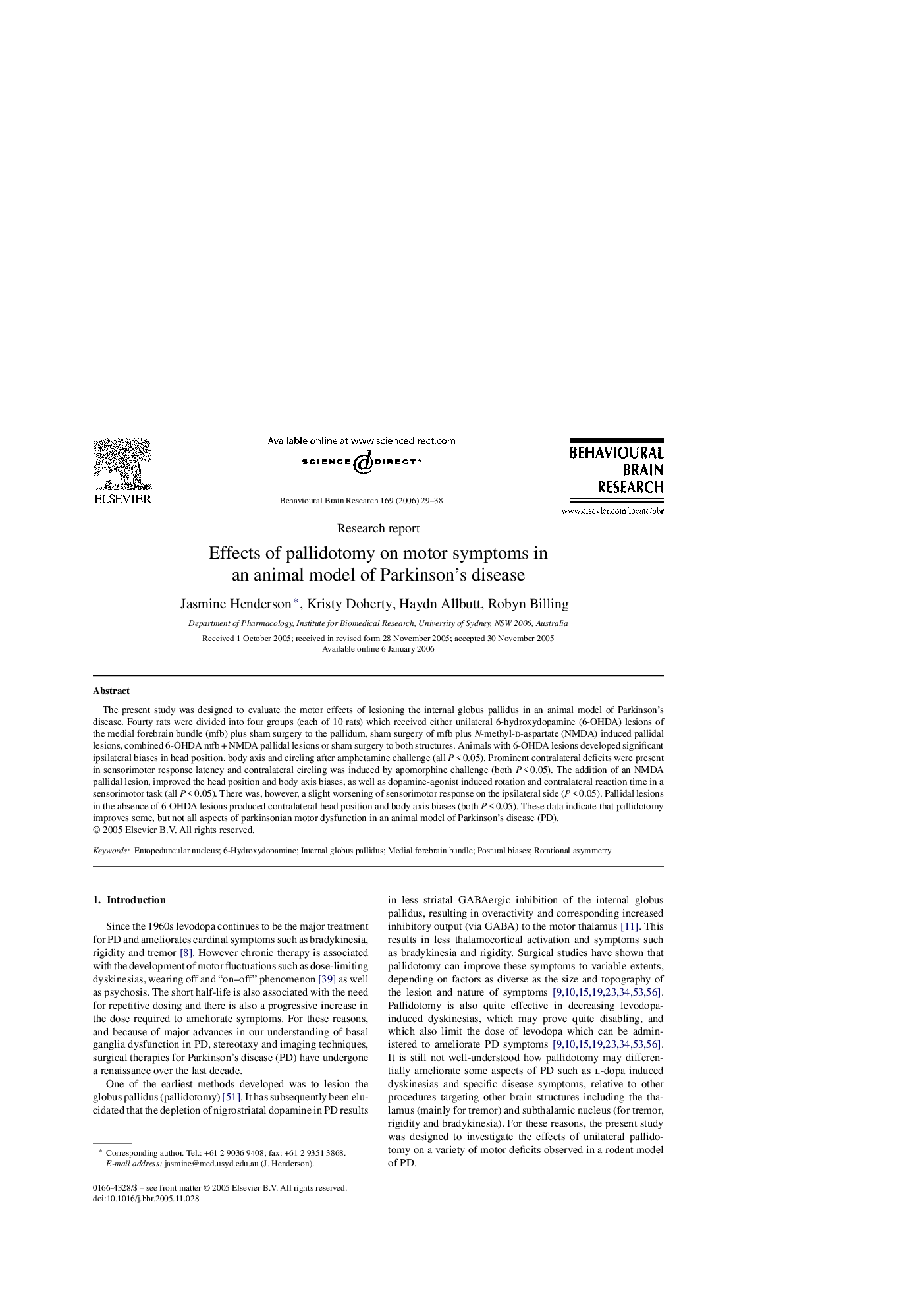| Article ID | Journal | Published Year | Pages | File Type |
|---|---|---|---|---|
| 4316290 | Behavioural Brain Research | 2006 | 10 Pages |
Abstract
The present study was designed to evaluate the motor effects of lesioning the internal globus pallidus in an animal model of Parkinson's disease. Fourty rats were divided into four groups (each of 10 rats) which received either unilateral 6-hydroxydopamine (6-OHDA) lesions of the medial forebrain bundle (mfb) plus sham surgery to the pallidum, sham surgery of mfb plus N-methyl-d-aspartate (NMDA) induced pallidal lesions, combined 6-OHDA mfb + NMDA pallidal lesions or sham surgery to both structures. Animals with 6-OHDA lesions developed significant ipsilateral biases in head position, body axis and circling after amphetamine challenge (all P < 0.05). Prominent contralateral deficits were present in sensorimotor response latency and contralateral circling was induced by apomorphine challenge (both P < 0.05). The addition of an NMDA pallidal lesion, improved the head position and body axis biases, as well as dopamine-agonist induced rotation and contralateral reaction time in a sensorimotor task (all P < 0.05). There was, however, a slight worsening of sensorimotor response on the ipsilateral side (P < 0.05). Pallidal lesions in the absence of 6-OHDA lesions produced contralateral head position and body axis biases (both P < 0.05). These data indicate that pallidotomy improves some, but not all aspects of parkinsonian motor dysfunction in an animal model of Parkinson's disease (PD).
Keywords
Related Topics
Life Sciences
Neuroscience
Behavioral Neuroscience
Authors
Jasmine Henderson, Kristy Doherty, Haydn Allbutt, Robyn Billing,
